Resignation Letter Template for the UK
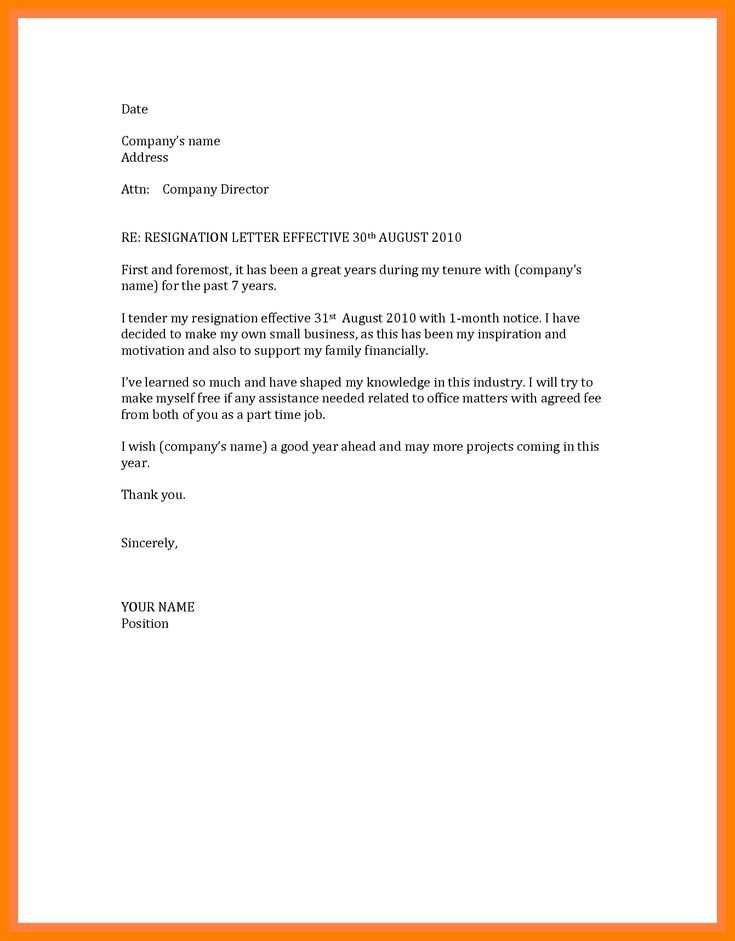
Leaving a position in a professional manner is crucial for maintaining positive relationships and securing future opportunities. Crafting a well-structured resignation announcement can ensure that your departure is respectful and clear, providing all necessary details without causing unnecessary disruption.
Essential Aspects to Consider When Leaving a Job
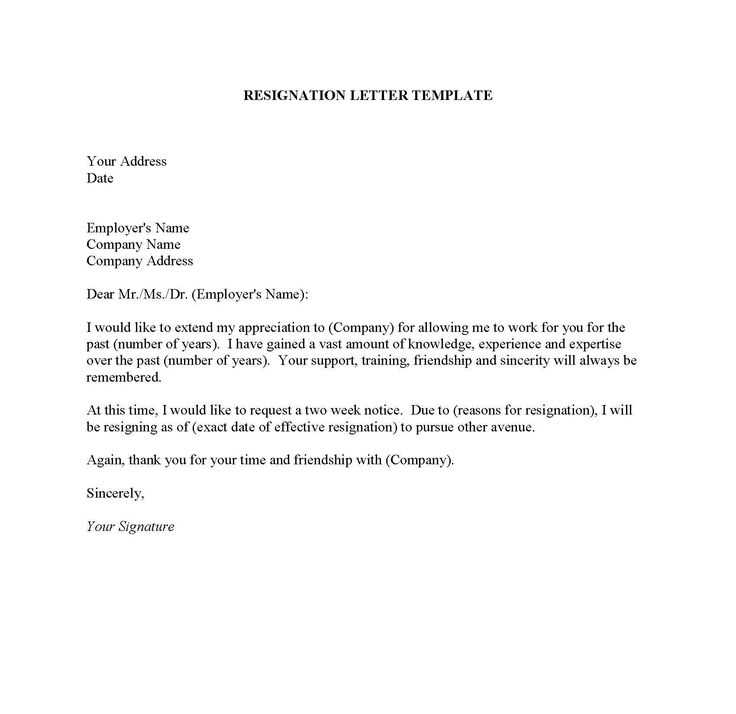
When announcing your departure, clarity and professionalism are key. The announcement should be concise while addressing the following points:
- Clear intent: State your decision to leave the company directly and unambiguously.
- Reason for leaving: While optional, providing a brief explanation can help the employer understand your decision.
- Gratitude: Express appreciation for the opportunities provided during your employment.
- Transition plans: Offer assistance in ensuring a smooth handover of responsibilities.
Step-by-Step Process to Craft Your Notification
To create an effective departure notice, follow these simple steps:
- Start with a professional salutation – Address your employer by name or appropriate title.
- State your resignation – Clearly mention that you are resigning from your position and include your final working date.
- Express gratitude – Acknowledge the experiences and skills gained during your time at the company.
- Offer assistance – Indicate your willingness to support the transition process and train a replacement if needed.
- Conclude respectfully – Sign off with a courteous closing statement, ensuring a positive tone throughout.
Examples of Departure Notices for Various Situations
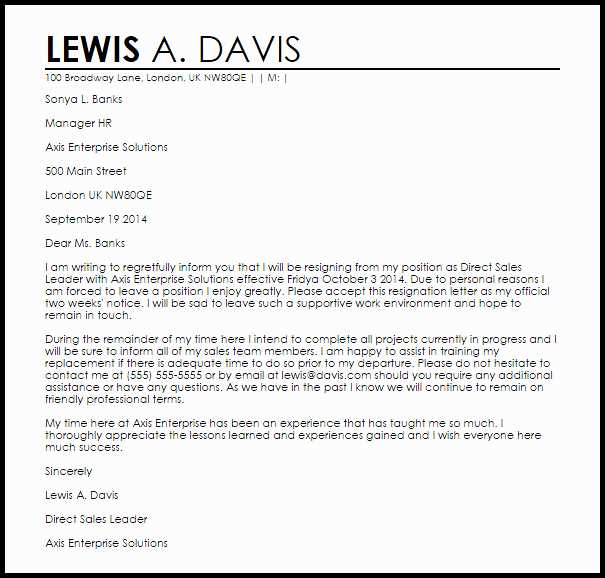
Each departure situation may call for a slightly different approach. Here are a few examples to guide you:
When Leaving for Personal Reasons
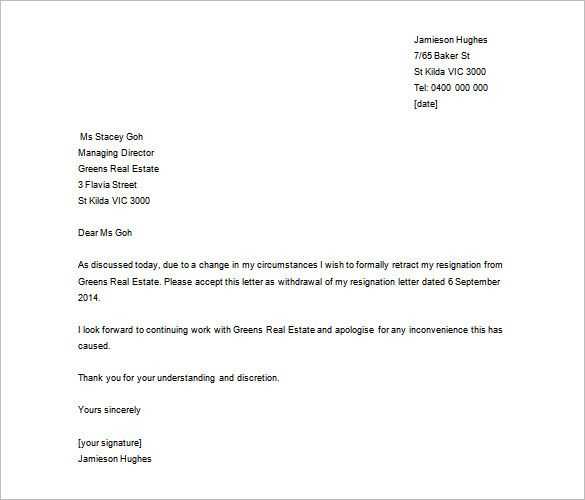
If you are leaving for personal matters, it’s important to keep the explanation brief and respectful. You may simply mention needing to focus on personal priorities.
When Moving to Another Job
If you are transitioning to a new role, it’s common to express excitement about the next step in your career while maintaining a tone of gratitude for the current experience.
When Resigning Due to Relocation
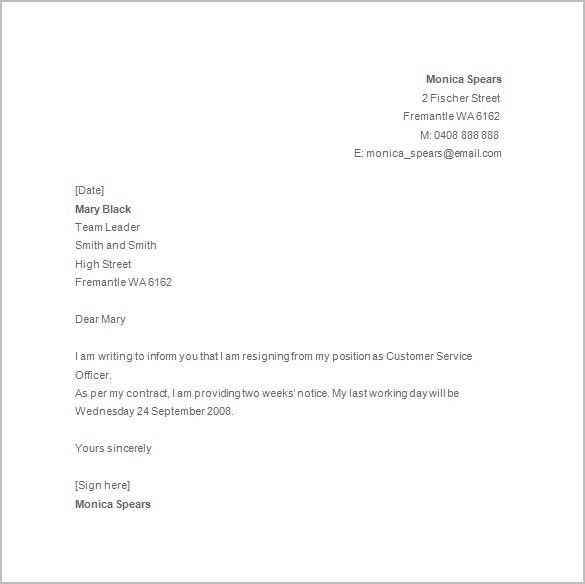
When relocating to a new area, your notice should emphasize that the move is the sole reason for your departure, maintaining a positive outlook on your time at the company.
Offering Help in Transitioning
Regardless of the reason for your departure, offering to help during the transition can ensure a smoother handover and leave a positive impression.
Final Thoughts
By structuring your resignation announcement in a professional manner, you demonstrate respect for your employer and the company. This approach leaves the door open for future opportunities and maintains a positive relationship moving forward.
Formal Departure Notification Guide UK
When deciding to leave a company, it is important to handle the situation professionally and respectfully. Crafting a clear and courteous notification will ensure a smooth transition and maintain positive relationships with your employer and colleagues.
How to Write a Formal Departure Notice
Begin by stating your intention to leave the company. Ensure that the tone remains respectful, expressing gratitude for the opportunity to work there. Mention the date of your last working day and provide any necessary context for your decision, though personal details are not required unless you choose to include them.
Key Elements of a Professional Departure Announcement
A well-crafted announcement should include the following:
- Clarity: State clearly that you are leaving, including the specific date.
- Gratitude: Express appreciation for the experiences gained during your time at the company.
- Offer Assistance: Indicate your willingness to help with the transition process, ensuring a smooth handover of responsibilities.
- Positive Closing: End the announcement with best wishes for the company’s continued success.
Best Approaches for Leaving Professionally
Leaving on good terms is essential for future professional relationships. Always provide ample notice and avoid discussing negative experiences in your notice. It’s best to focus on the positives and leave behind a professional image.
Common Mistakes to Avoid When Departing
When drafting your departure announcement, avoid the following common errors:
- Being too vague: Be clear about your intent to leave and your last working day.
- Leaving out gratitude: Failing to express appreciation for the opportunity can leave a negative impression.
- Writing an overly lengthy message: Keep your notice brief and to the point.
Examples of Departure Notifications for Different Situations
Whether you are moving to a new role, relocating, or leaving for personal reasons, here are some examples of how to structure your message:
- When changing jobs: Express excitement for the new opportunity while thanking the employer for your time at the company.
- When relocating: Keep the message focused on the fact that the move is the reason for leaving, and express thanks for the company’s support.
- When leaving for personal reasons: If you prefer not to provide a detailed explanation, simply express that personal matters are the reason for your departure.
Advice for Parting from a Job Gracefully
As you depart from your role, always ensure that you leave a positive impression. Remain professional throughout the process, offer your assistance for a smooth transition, and express gratitude for the experiences and opportunities provided by your employer. This approach will ensure that you part on good terms, keeping doors open for future opportunities.